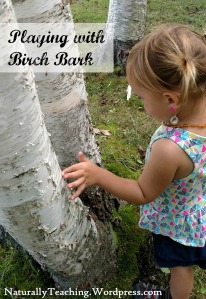
Sensory play is very important for toddlers. Take a look at our little one and her experience playing with birch bark at Birch Bark Observations.


Sensory play is very important for toddlers. Take a look at our little one and her experience playing with birch bark at Birch Bark Observations.
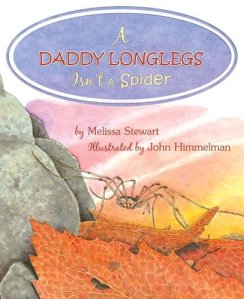
This Nature Books for Kids: A Daddy Longlegs Isn’t a Spider is about the adventure of a female daddy longlegs and her entire life in the forest. It clears up a lot of misconceptions held not just by adults but also by children. Follow the link to read up on accompanying crafts and outdoor activities for this book.
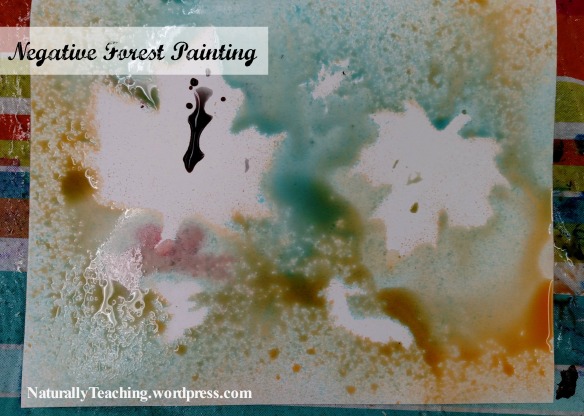
Looking for a fun and engaging process craft focused on the forest? Give this negative painting a try. Read all about making these beautiful and fun pieces at Nature Crafts for Kids: Negative Forest Painting.
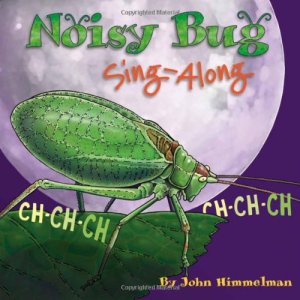
This Nature Book for Kids: Noisy Bug Sing-Along is a well illustrated and high-sensory experience where kiddos get the chance to sound like bugs. Check out the full story to find out some crafts and outdoor activities you can pair with this great book!

Check out this tutorial for creating Nature Crafts: Eco-hero Cape. Using nothing more than just an old (or new, up to you) t-shirt and scissors follow along with this procedure and have a cape your kids can decorate and show off to their friends!
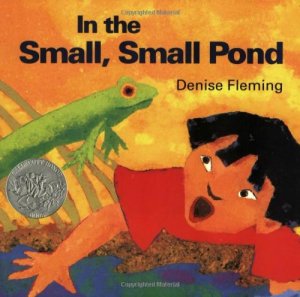
In the Small, Small Pond is a picture book for early childhood readers about ponds and their inhabitants. Check out our plan for a story hour including two crafts, outdoor activities and accompanying books at Nature Books for Kids: In the Small, Small Pond.
To accommodate the demand for teacher and parent nature information we have moved our site to our own domain!
Check it out!
Camouflage is an intriguing and exciting property of animals that children really get into. To fuel this interest consider including one of the following camouflage inspired games to teach about the natural adaptation that allows animals to blend in with their surroundings. Similar to Outdoor Games for Kids: Plant Biochemicals Game, the following games are appropriate for kids fourth and fifth grade by science standards in Michigan, however, you could play them with children younger to talk about color differences, animal properties or for fun!
Some applicable Michigan science GLCES, Grade Level Content Expectation Standards, include:
Camouflage Hide and Seek: in this game your students will get the opportunity to hide and blend in with their environment. To play chose one student to be the “seeker” and draw a box on the ground with a stick; the seeker must remain in this box for the duration of the round. The rest of the children will run and hide in the boundaries you have designated by explanation, ribbons, flags or some other indicator. The seeker will turn their back on the playing field and count to thirty. Once they have reached thirty they turn around and call out names of people they can see or a color behind a tree while standing inside their box. When a student has been identified by name or color they will come to the “jail” which can be next to you or designated by another box drawn on the ground (since these children have a different vantage point they are unable to help the seeker).
When the seeker has decided that they have found as many people and colors as they can you can have them call “camouflage” and the first person to run out and touch them will be the next seeker. If you have older kids and would like to prolong the game then you can have them re-hide with some sort of stipulation such as “re-hide no trees”, “re-hide in ten seconds”, “re-hide closer” or something else to change up the hiding spots (I would suggest only allowing your seeker three chances to re-hide and then call “camouflage” or you could be there all day). If you know that you are going to be playing this game on a certain day, feel free to give your kiddos the heads up, you’ll be surprised about the items they wear to better their chances of survival! It’s also a good review to see what they think would blend in to their surroundings.
Camouflage Snakes: create fake snakes by braiding together three pieces of scrap fabric and giving them some googly eyes and a red tongue. Create several different colored snakes to encourage students to hide snakes in different colored surroundings (don’t be afraid of colors that may not seem to fit in nature like blues and purples, your students will find a way to make the snake blend in). To play: give a certain number of camouflage snakes to students, anywhere from five to seven for a classroom of thirty. The students with the snakes will be in charge of hiding the snakes out in nature; remind them to make sure at least a pinkie length of their snake is sticking out and then you won’t have fully buried snakes to hunt down later. For younger students you may want to remind them that a green snake would blend in best with green nature whereas a red snake would blend in best with red nature. Once the snakes have been hidden have the hiders stay on the trail by you and then the rest of the students can go out and find the snakes. The children who find the snakes will hide them in the next round. Take a closer look at the picture for this article there is a camouflage snake hidden somewhere in the frame.
For more camouflage inspired games go to Outdoor Games for Kids: Camouflage Hide and Seek (Part 2) coming soon.
Looking for a fun and engaging outdoor game about plants? The Plant Biochemicals game is sure to ensnare your students and teach them about the allelopathic properties of certain plants. Allelopathy is the ability of certain plants to emit a biochemical from their roots to suppress and sometimes kill surrounding plants in order to out-compete and gain the natural resources of the surrounding area. Some examples of Michigan plant species with allelopathic properties include: Spotted Knapweed, Black Walnut, Sumac, Goldenrod and some Maples and Pines.
This game is an applicable activity for fourth, fifth and sixth graders in Michigan to teach survival attributes and competition among organisms. In my home state we use the GLCES, Grade Level Content Expectation Standards, for science and social studies. Applicable standards include:
Indoor Center: as pictured above, this game can be adapted to play inside as well as outside. To play inside as a center or on a rainy day collect the following materials: a few small balls, “plant bowling pins” such as the trees from Haba Motley World Building blocks
and masking tape placed in a circle on the floor to serve as the “starting stump”. When the students reach the center they will stand on the starting stump; in order to obtain the nutrients they must send their biochemicals outward toward the surrounding plants- they do this by gently kicking the balls with their feet aiming to knock the “plant bowling pins” over. They are successful in collecting the natural resources only when they affect all of the surrounding plants.
Outdoor Game: to play this game as an entire class choose two or three students to be the plant with the allelopathic properties, the rest will be surrounding plants (you can designate these students with ribbons tied to hair ties and then placed around the students’ wrists). Supply the allelopathic students with a few kick balls or other yard balls to kick at other students’ legs and feet. The other students will run away from the allelopathic students and try not to get hit by the “biochemicals” aka the yard balls. If they are struck by a ball they must either enter a dead zone where they wait for another round to begin or you can have them become a new allelopathic plant by trading out their ribbon for an allelopathic one; this second method will allow all students to play the entire time as well as show the growth of a plant that collects the majority of the natural resources surrounding it.
Good luck with your allelopathic experience! It is a mysterious and intriguing property of plants that can get your students interested in organisms that are often neglected!
We took full advantage of my day off on Monday and spent some time in the river. Our little squirt absolutely LOVES the water and she has a blast exploring everything. We were equipped with her bathing suit, swimcap, reusable swim diaper and water shoes. Upon entering the water she was very sure-footed and wanted to get her hands on everything. We found mussels, aquatic plants, beetles, fish and plenty more. The most important find, however, were the rocks at the bottom of the river; she was mesmerized by the differences in colors, shapes and sizes (I see a rock collection in the near future!)
Not only did we walk in the river we tested out how much she would enjoy tubing since we are interested in tubing as a family later this summer (the tube that we bought was only $4 from Meijer and it has the cross supports to keep her from falling out; it works great!). I walked her upstream and then walked beside her as she floated down river. The look on her face when she realized that I wasn’t holding on to the tube was quite humorous; it was an eyebrow-raised sort of moment ‘0_o’
This time of the year is great for wading in the river with little ones; the water is very low and slow and is quite warm. Find a local river and spend some time looking around for little river treasures such as flat rocks to skip, empty mussel shells, snail shells or even some fishing lures that were left behind (just make sure all non-swimmers are wearing some sort of floaty). A great book to read before or after you get in the river is If You Find a Rock
by Peggy Christian. Since rocks are often found when exploring rivers in both the riverbed and the riverbanks, this book is applicable because it gives meaning to rocks that is easy for children of all ages to relate to.
A fun game for kiddos that are able to swim is to play ball tag. What you’ll need are small floating balls that your kiddos can toss at each other without getting hurt. Someone starts as “it” and tries to hit someone else with the ball to tag them. If they hit someone then they become the new “it” person, if they miss they have to make it to another ball and try again, sometimes this becomes a real challenge since the river is constantly flowing downstream. This is an especially fun game with a lot of people but can be done with just a few. I wish you luck with a river ramble of your own!